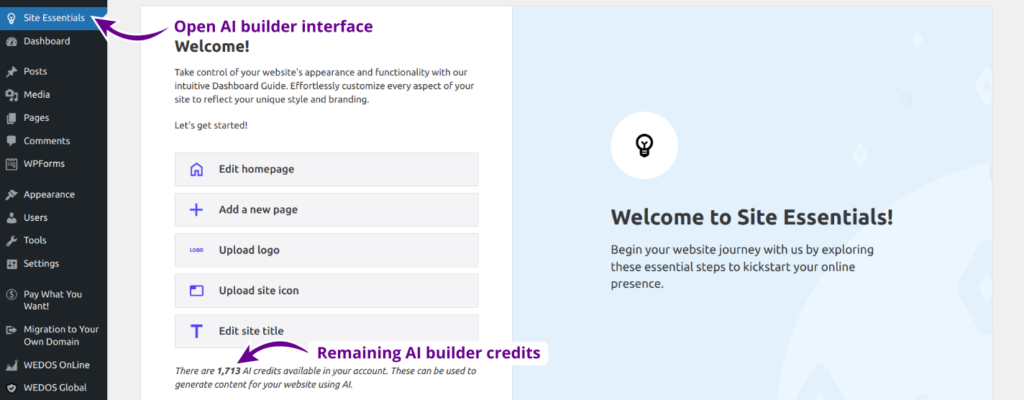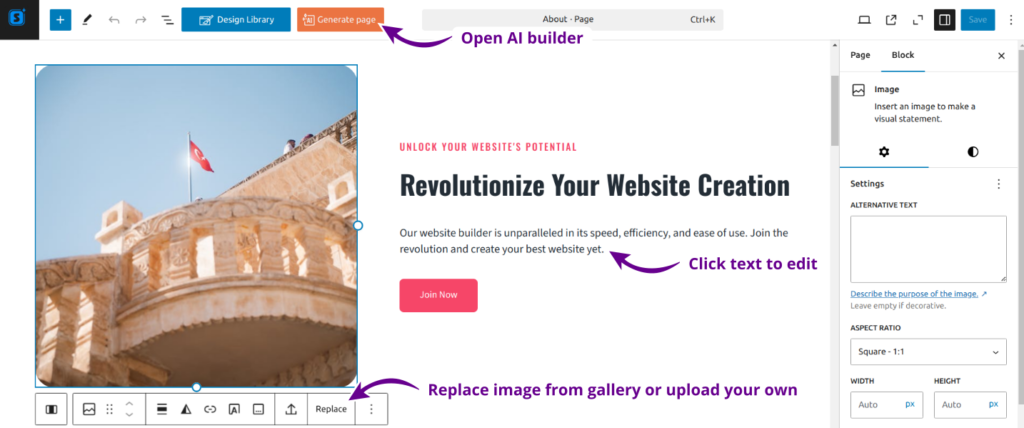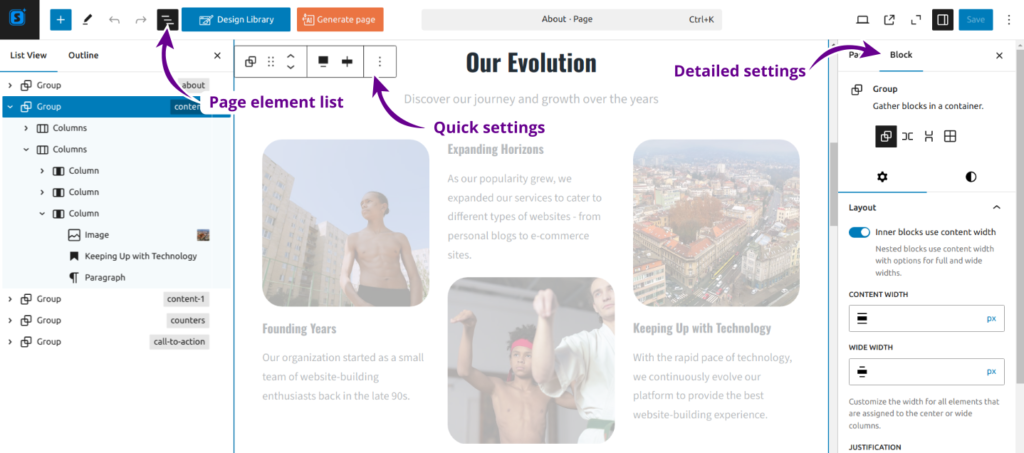This guide covers the following topics:
Table of Contents
Edit Site Essentials
Use the Site Essentials interface to operate the AI Builder after the initial website generation. You can find it in the website administration panel after logging in with the details you received in the email about setting up the new service.
Through this interface, you can make basic website edits manually or with the help of AI, including:
- Edit the homepage
- Add a new page
- Upload a logo or favicon
- Edit website name
Below, you will also find options to:
- Create a new page or post
- Edit heasers, footers, navigation and styles
- Restart the guide (generate a new website from scratch)

Editing the website using AI consumes AI credits. These are subject to the following rules:
- Every website starts with 2000 AI credits.
- Generating the entire website costs about a few hundred AI credits.
- Generating single features or pages costs units or tens of AI credits.
- You can purchase more AI credits if you run out. You can find out more in the Payments article.
WordPress Basics
WordPress is one of the most widely used content management systems (CMS) and is very popular among amateurs and professionals alike. The purpose of SODEW’s AI Builder is to lower the bar for creating your own website as much as possible, but in some cases you may want to work with WordPress directly. In the following text you will find brief information about the following basic features of the WordPress content management system and their relationship to AI Builder:
Posts and Pages
You use these two basic content types to create website content.
- Posts are essentially articles. You can sort them into categories and add tags to them for easier sorting.
- Pages usually display stable content, such as contact information or terms of use. They can also list posts based on selected criteria.
The AI Builder will create both pages and posts for you. We recommend that you review and edit both carefully – click through the items in the posts and pages list and adjust the text and images. You can also generate individual pages anew using AI and more detailed input.

Templates and Plugins
You can significantly expand the functionality of basic WordPress using templates and plugins, which can be supplied (free or paid) by external providers, or you can create your own!
- Templates are mainly used to quickly create pages with a specific look. AI Builder includes its own template and the default template that comes with the WordPress version. You can add your own templates to the system.
- Plugins extend the system’s functionality. AI Builder includes selected plugins according to the website theme, but does not allow plugin management (except for updates).
Block Editor
Most modern templates support a block editor, which allows for very detailed element tuning on pages and posts, combining them into groups, and saving them for easy reuse.

Users and Comments
WordPress allows you to build a wide hierarchy of users, from readers to editors and website content administrators.
Users can, by default, comment on posts, but not pages. You can change this behavior for individual posts/pages, or globally in Settings.
Web Security
Website security is handled by WEDOS Global Protection . This takes care of:
- Content caching to speed up page loading.
- Decentralization of content distribution, which also contributes to speeding up and reducing the load on the web server.
- Protection against DDoS attacks and known WordPress vulnerabilities.
